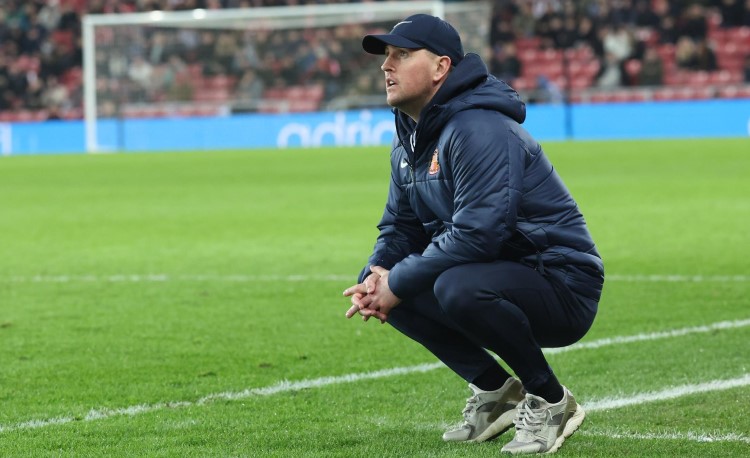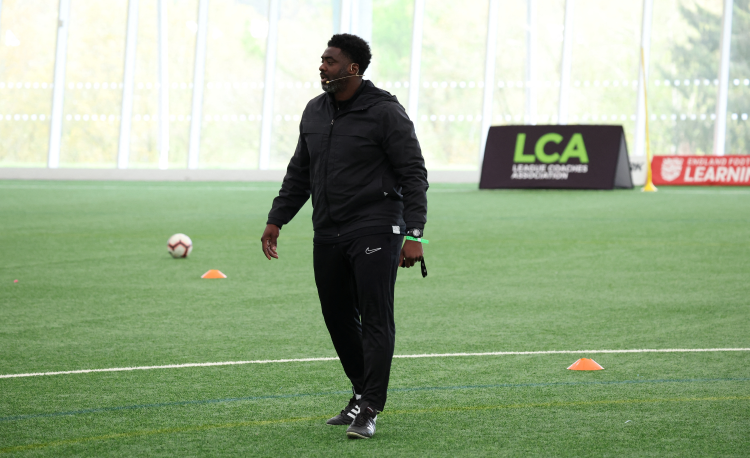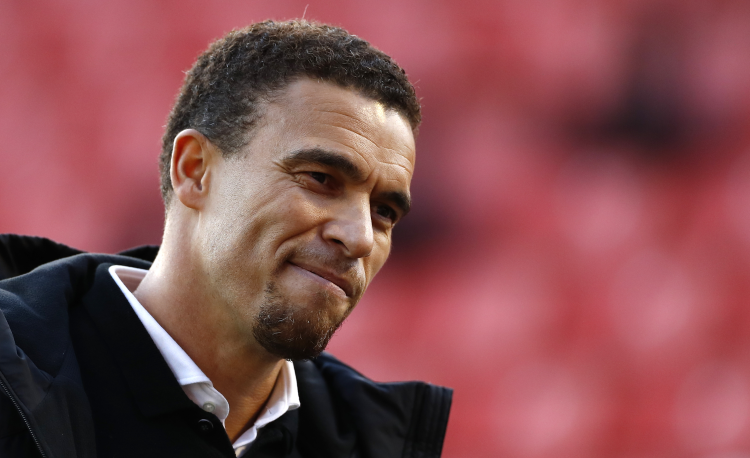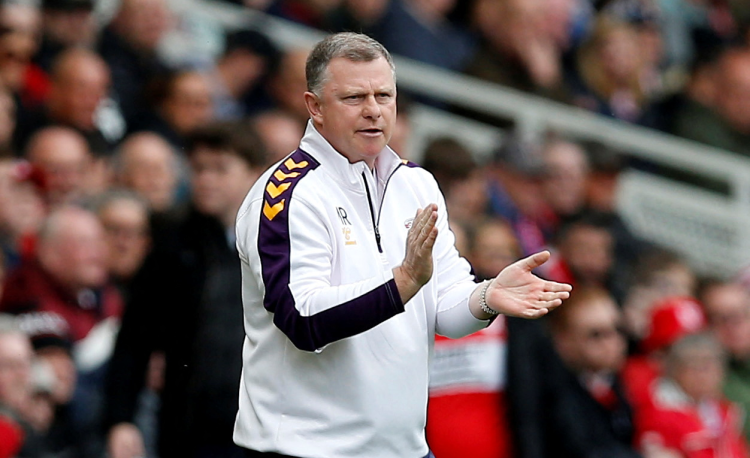You are viewing 1 of your 1 free articles
Creating transition moments
This session is about the creation of transition both in and out of possession for individuals, units and both teams.
| Area | Full pitch |
| Equipment |
8 mini goals |
| No. of Players | Minimum 11, more if players rotate |
| Session Time | Up to 75 mins |
This session is about the creation of transition both in and out of possession for individuals, units and both teams. Using multiple coaches would be ideal to allow coaches roles and responsibilities to focus on a team each plus individual-focused outcomes from the session.
Every element of the session will have a transition focus for both teams. The team in possession will need to create early passing opportunities for the player in possession of the play. The out-of-possession team will have a variation of pressing triggers, locking the pitch to reduce space and limit passing options. All practices will have elements of manufactured ball turnovers to ensure the session isn’t too clean or sterile and result in plenty of practice points on the session outcomes.
This would be a practice which would have high loading outcomes from a physical perspective so I would ideally run this on MD-3 or MD-4. Dealing with defending transition in the modern game is something all players need to understand, and the same applies with the value placed on attacking transition to utilising specific game moments.
Whether the focus of the session is weighted more towards technical or tactical outcomes, I’ve always felt both aspects of these elements of the game have equal importance’s and should flow back and forth within your planning, preparation and delivery. Part 1 is a heavily overloaded session design which should aid repetition of in-possession techniques but have a tactical focus on in possession transitions, support angles and when, where and how to play forwards plus out-of-possession transition tactical concepts of counter-pressing, reducing pitch size and numerical advantages. Part 2 is more 11v11 focused with target players to aid transition both in and out of possession. Part 3 is a more manufactured transition design which creates 6v6 transitions and attacking v defending concepts. All three parts of the session I would consider game-based situations, all with a narrative of playing forward.
MOVING RONDO (TRANSITIONS)
Set up in 4v2 in the first box and 2v2 in the second box, with a target player in the third box.
This becomes a 7v4 keep ball exercise. Four defenders are locked into the first two boxes (split two and two) with the top box free for the target player, which the team in possession find through variation and variety. Seven attackers are locked into all three boxes (split with four in the first box, two in the second box and one in the top box) [1a].
[1a]

-
4v2 in the first box and 2v2 in the second box, with a target player in the third box
- Reds look for target player through variation and variety
There are no individual conditions. I’ve always liked my players to make good decisions of when and where to offload on maximum or minimum touches, dribble or retain possession through a variation of options.
Once the ball finds its way to the target player in the top box, the practice flips [1b]...
[1b]

-
Once reds find target player, flip the practice
...and works back through the other way, creating transition moments for both the team in and out of possession [1c].
[1c]

- Reds now seek different target player back the other way
“I’ve always liked my players to make good decisions”
MOVING DIRECTIONAL POSSESSION 1
Set up in four zoned areas with the defending team only able to occupy three of them. Each unit is locked into their specific zone out of possession. The attacking team are able to occupy all zones but offside rule applies in the zone closest to the target goals. We have multiple target goals to find on initial turnover of possession [2].
[2]

-
Set up in four zoned areas with the defending team only able to occupy three of them, attacking team can occupy all of them
- Reds retain possession and seek their target player
- Target player seeks target goals
“Each unit is locked into their zone out of possession”
MOVING DIRECTIONAL POSSESSION 2
Set up in transition 6v4+2 (essentially 6v6 attacking v defending) [3a]...
[3a]

-
Blue team keep possession and look for target goal as reds close them down
- Reds move to gain possession
...with two floating players playing for the team in possession [3b].
[3b]

-
Floating players join reds in attack
Those floating players are on restricted touches to aid transitions on turnovers and keep tempo of play high in the final third when sustaining attacking play. Again we have multiple target goals to find either on transition from defence to attack or when sustaining play in the attacking third. The practice flips when opposition gain possession [3c].
[3c]

-
Practice flips and begins again
“Keep the tempo of play high in the final third”
Players in floating roles need to have managed minutes due to the physical requirements of working end to end.
COACHING POINTS
What are the key things to look out for?
In possession, we are looking at when and where to play forward on the initial turnover of possession (do you play round, through, onto, or over). Be aware playing round must be followed by a forward pass otherwise this allows the opposition to regroup. We are also looking at tactical layers within the in-possession structure to allow the team to progress, the body shape of individuals, and whether you combine or freestyle (solo) to progress in attacking territory.
Out of possession, we are looking at when and where can you defend two opponents with individualised positioning, when and where can you defend space and player with individualised positioning, the body shape of individuals, and counter-pressing opportunities.
What are the typical mistakes players might make and how do I avoid them?
The session focus can create a lot of chaos and high-intensity actions both in and out of possession. It’s vital that the coaches leading the session keep the focus and outcomes on track and the session doesn’t turn into a player-friendly session with little learning taking place. The balance between design sessions which players enjoy and like, coupled with specific learning outcomes which will improve the player both collectively and individually is always one of the hardest parts of good session design.
Related Files
Editor's Picks
Deep runs in the final third
Using the goalkeeper in build-up play
Pressing principles
Intensive boxes drill with goals
Penetrating the final third
Creating and finishing
My philosophy
Pressing initiation
Compact team movement
Coaches' Testimonials

Alan Pardew

Arsène Wenger

Brendan Rodgers

Carlos Carvalhal

José Mourinho

Jürgen Klopp

Pep Guardiola

Roy Hodgson

Sir Alex Ferguson

Steven Gerrard
Coaches' Testimonials

Gerald Kearney, Downtown Las Vegas Soccer Club

Paul Butler, Florida, USA

Rick Shields, Springboro, USA

Tony Green, Pierrefonds Titans, Quebec, Canada
Join the world's leading coaches and managers and discover for yourself one of the best kept secrets in coaching. No other training tool on the planet is written or read by the calibre of names you’ll find in Elite Soccer.
In a recent survey 92% of subscribers said Elite Soccer makes them more confident, 89% said it makes them a more effective coach and 91% said it makes them more inspired.
Get Monthly Inspiration
All the latest techniques and approaches
Since 2010 Elite Soccer has given subscribers exclusive insight into the training ground practices of the world’s best coaches. Published in partnership with the League Managers Association we have unparalleled access to the leading lights in the English leagues, as well as a host of international managers.
Elite Soccer exclusively features sessions written by the coaches themselves. There are no observed sessions and no sessions “in the style of”, just first-hand advice delivered direct to you from the coach.









